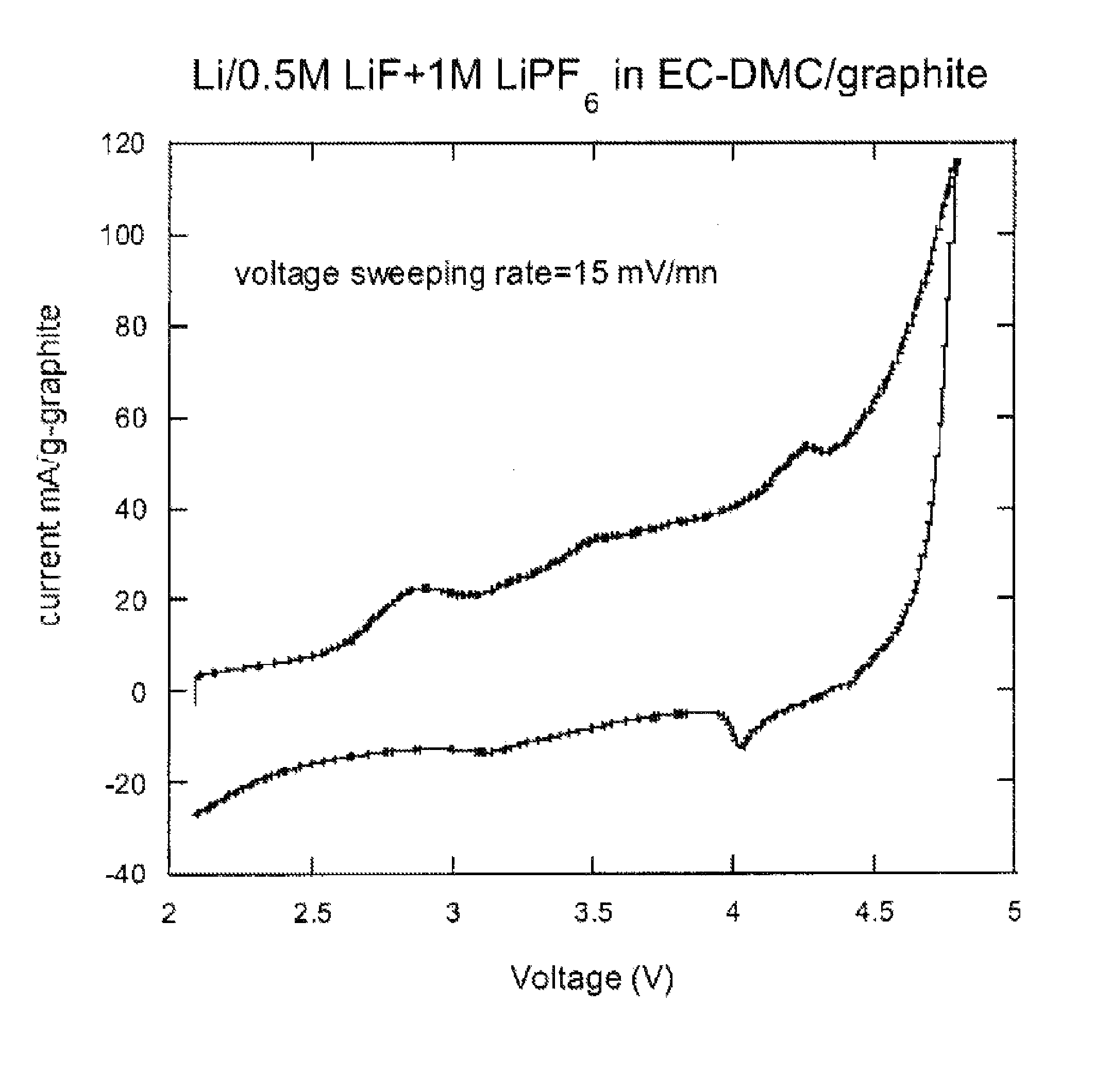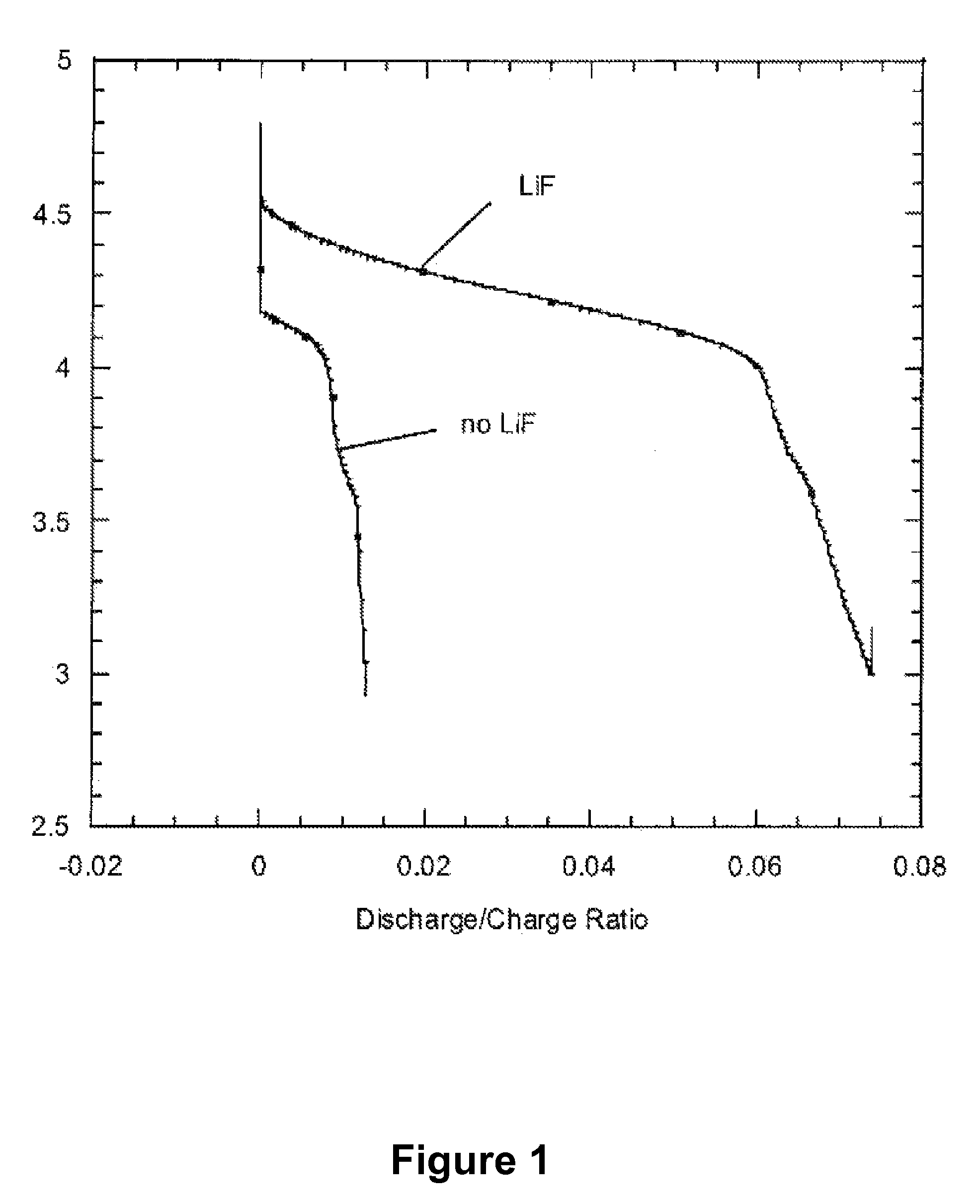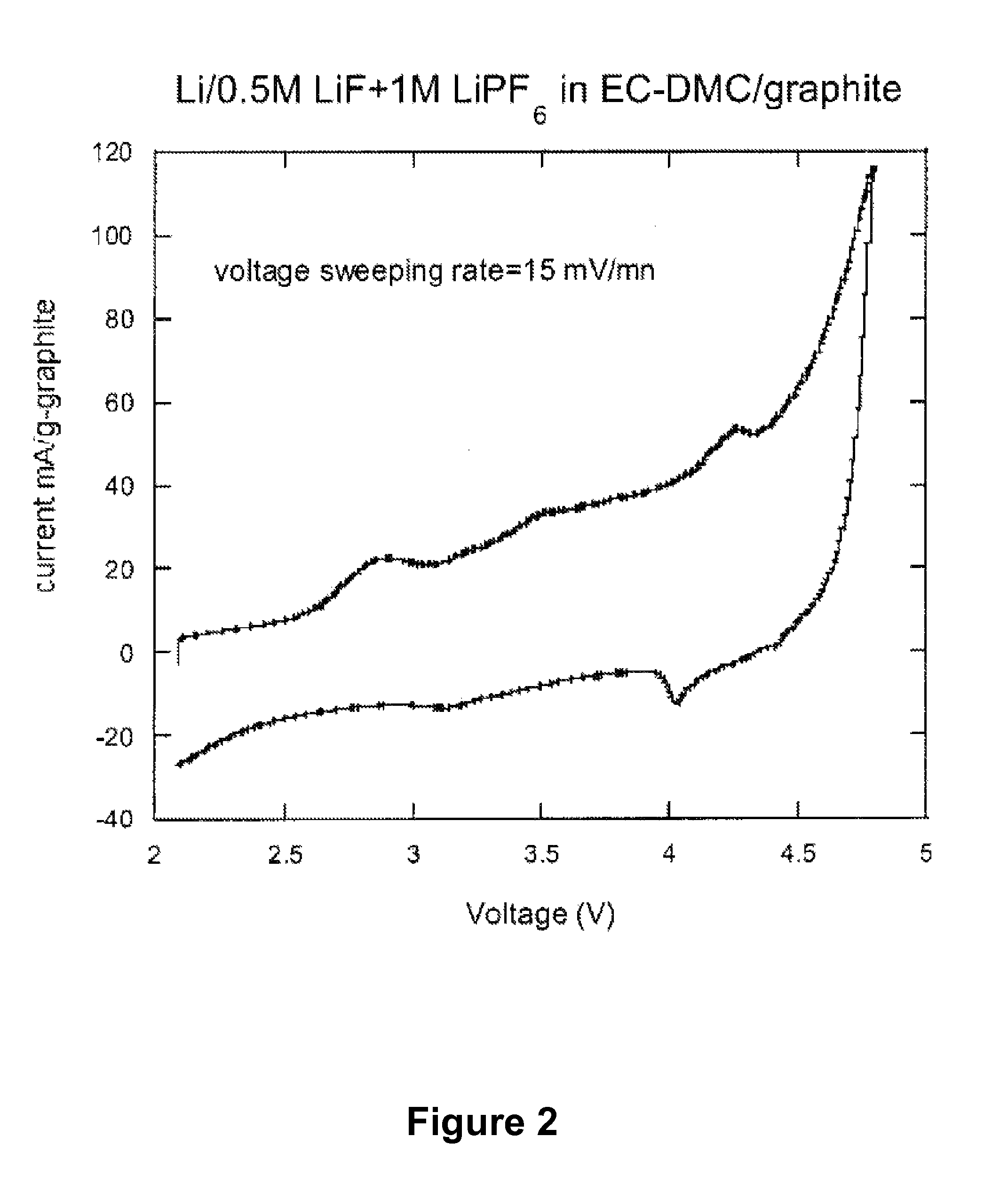Dissociating agents, formulations and methods providing enhanced solubility of fluorides
a technology of dissociating agent and fluoride, which is applied in the direction of non-aqueous electrolyte cells, cell components, electrochemical generators, etc., can solve the problems of increasing the solubility of fluoride by several orders of magnitude, limited electrochemical cell power output of many state-of-the-art lithium cells, etc., and achieves enhanced solubility of fluoride. , the effect of fluorid
- Summary
- Abstract
- Description
- Claims
- Application Information
AI Technical Summary
Benefits of technology
Problems solved by technology
Method used
Image
Examples
example 1
Electrolytes and Dissociating Agents for Electrochemical Cells
[0073]To demonstrate the chemical properties and utility of the present additives, compositions, formulations and methods, electrolytes of the present invention were prepared and integrated into lithium electrochemical cells. The electrolytes evaluated comprise LiF and an appropriate dissociating agent dissolved in a selected nonaqueous organic solvent or combination of nonaqueous organic solvents. The electronic performance of the electrochemical cells was evaluated to demonstrate the beneficial chemical and physical properties of electrolytes of the present invention.
[0074]1. Preparation of the mother solutions: 1 M solutions of LiPF6 in EC-DMC and of LiBF4 in γ-BL and of LiAsF6 and of LiClO4 in PC were prepared in a dry box filled with argon. (EC=ethylene carbonate, DMC=dimethyl carbonate and PC=propylene carbonate). These solutions are called ‘mother solutions’ throughout this description.
[0075]2. Dissolving LiF in mo...
example 2
Comparison of Fluorinated Carbon Electrode Lithium Half-Cells with and without LiF
[0085]Two fluorinated carbon electrode (CF0.125) lithium half cells were prepared. One cell contained an electrolyte of 1 M LiPF6 in propylene carbonate (PC); the other cell contained an electrolyte of 1 M LiF and 1 M 12-crown-4 in PC. The crown ether acts as a cation receptor to allow LiF to dissolve in the PC. The cells were cycled between about 3.2V and 5.5V at a rate of 1 mV / s.
[0086]FIG. 4 depicts the current provided by the cell containing LiPF6 during a charge / discharge cycle and shows no clear oxidation or reduction peaks. This cell has a much higher charge capacity than discharge, indicating a large irreversibility.
[0087]FIG. 5 depicts the current provided by the cell containing LiF during a charge / discharge cycle and shows oxidation peaks at about 3.6V and 4.15V and a reduction peak at about 4 V. This cell has similar charge and discharge capacities, indicating good reversibility.
[0088]These r...
example 3
Fluoride Solutions having Dissociating Agents
[0089]Table 2 provides a summary of experimental conditions useful for making fluorides solutions of the present invention from a variety of fluoride salts, including NH4F, NaF, KF, MgF2 and AlF3.
[0090]
TABLE 2Example Fluoride SolutionsPC or EC / DMCCrown etherAnion receptorNH4FDissolved in PC.Not in EC / DM.(NH4F was dried invacuum at 100° C.overnight. 0.185 gNH4F was added intoPC and stirredovernight at about40° C.)NaFXDissolved(0.21 g NaF wasadded into 1.1 g 15-crown-5 (1:1 molarratio). The mixturewas stirred at roomtemperature for 20minutes. Add 4 ml PCto reach 5 ml in totalvolume. Stirringsolution overnight atabout 40° C.)KFXDissolved(0.29 g KF and 1.32 g18-crown-6 wereadded into 5 ml PC.The solution wasstirred overnight atabout 40° C.)MgF2XDissolved Yellow colorsolution(0.1 g Tris(pentafluorophenyl)borane was dissolved in 5 mlPC. 0.31 g MgF2 was mixedwith the solution and stirredovernight at about 40° C.)AlF3XX
PUM
| Property | Measurement | Unit |
|---|---|---|
| ionic conductivities | aaaaa | aaaaa |
| ionic conductivity | aaaaa | aaaaa |
| ionic conductivity | aaaaa | aaaaa |
Abstract
Description
Claims
Application Information
 Login to View More
Login to View More - R&D
- Intellectual Property
- Life Sciences
- Materials
- Tech Scout
- Unparalleled Data Quality
- Higher Quality Content
- 60% Fewer Hallucinations
Browse by: Latest US Patents, China's latest patents, Technical Efficacy Thesaurus, Application Domain, Technology Topic, Popular Technical Reports.
© 2025 PatSnap. All rights reserved.Legal|Privacy policy|Modern Slavery Act Transparency Statement|Sitemap|About US| Contact US: help@patsnap.com



